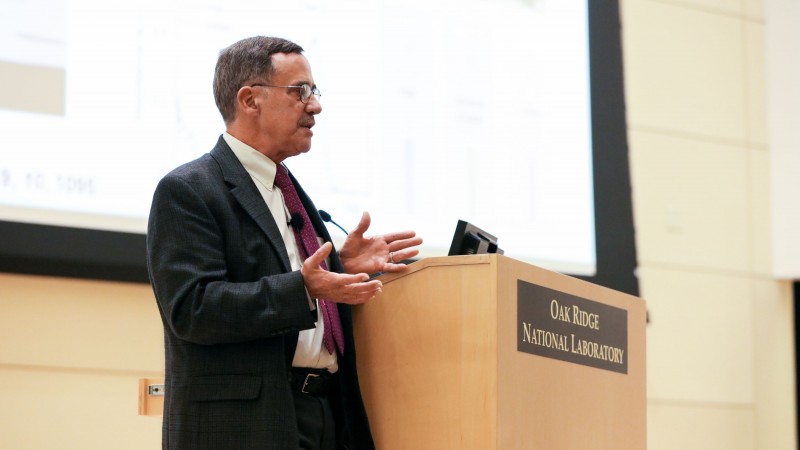Soft matter materials like polymers, proteins, and lipids are critical components of everything from pharmaceuticals to batteries. Learning more about these materials will dramatically increase the quality of products and technologies consumers around the world rely on every day.
To accelerate this new era of innovation, the Second Target Station (STS) at the Department of Energy’s (DOE’s) Oak Ridge National Laboratory’s (ORNL) Spallation Neutron Source (SNS) will allow researchers to probe soft matter samples with neutrons of very different energies at the exact same time. The higher-energy neutrons let researchers explore the minute details of a material’s structure and the arrangement of atoms, while the lower-energy neutrons give researchers a comprehensive understanding of a material at much larger length scales. Whereas researchers currently have to conduct multiple experiments in order to get both sets of information, STS will give them the power to gather it all during a single experiment, greatly increasing the speed with which manufacturers can produce the next generation of advanced soft matter materials.
“Imagine being able to study the features of a single tree, while developing a detailed understanding of the entire forest it resides in at the same time. That’s the kind of observational power this new facility will give us,” said Tom Russell, Silvio O. Conte Distinguished Professor at the University of Massachusetts-Amherst.
Russell, who specializes in polymer and soft matter research, recently spoke at the Science at the Second Target Station Workshop about the different ways SNS’s Second Target Station will improve our ability to understand complicated soft matter systems like hydrogels, oils, and polymers.
The workshop aimed to facilitate discussion of the opportunities enabled by the STS across current and prospective future scientific fields. Scientists from all disciplines turned out for the event at SNS on Dec. 9 and 10. It was a critical step in the STS project that will lead to identification and to the formation of teams that will continue to refine the science case and help define requirements for the individual instruments to be built at STS.
“We’ll be able to generate research on soft matter systems much faster, which in turn will have a positive impact on our ability to create new products and technologies based on these versatile materials. It’s no exaggeration to say that STS will drastically improve our ability to understand and utilize soft matter for medical, mechanical, and research applications,” said Russell.
For Russell, gaining a better understanding of soft matter materials is an urgent scientific mission that will have a significant impact on our lives.
“We are soft matter. The skin on our bones, the blood in our veins, and the water in our bodies are all soft matter. Learning more about these systems gives us a better understanding of life itself, and that knowledge is invaluable.”
Why use neutrons to study soft matter?
Neutrons are an excellent technique for studying materials made with soft matter. They’re non-destructive, which means they can explore samples without damaging them or altering the behavior of their microstructures. They’re also particularly sensitive to hydrogen, which is a prominent feature in many soft matter materials.
“STS will make neutrons even more effective for studying soft matter materials by enabling researchers to probe samples with neutrons of different energy levels simultaneously. It will be a far more efficient process. Experiments that once took half an hour may now take only 30 seconds,” said Hans Christen, Director of ORNL’s Neutron Scattering Division.
SNS is a DOE Office of Science User Facility. UT-Battelle LLC manages ORNL for the DOE Office of Science. The Office of Science is the single largest supporter of basic research in the physical sciences in the United States and is working to address some of the most pressing challenges of our time. For more information, please visit http://science.energy.gov/.—by Gage Taylor





